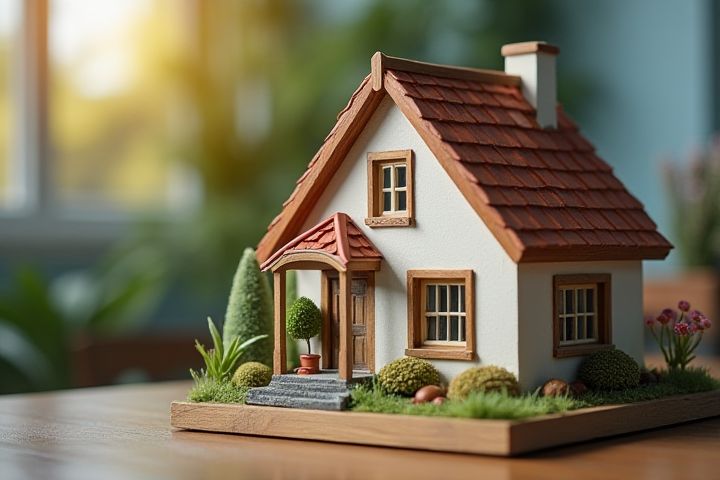
A smart house integrates advanced technology to enhance convenience, efficiency, and security, creating a seamless living environment. Smart devices such as thermostats, lights, and security cameras connect via a home network, allowing you to control them remotely through a smartphone or voice assistant. Automation features enable personalized routines, adjusting settings based on your preferences and schedules, optimizing energy consumption, and reducing costs. Security systems in smart homes include smart locks and surveillance cameras, providing real-time monitoring and alerts to ensure your safety. Ultimately, the interconnectedness of these technologies fosters a more responsive and intelligent living space, catering to your lifestyle needs.
What Makes A House Smart
Home automation systems
Home automation systems integrate various technologies to enhance convenience, security, and energy efficiency in your house. For instance, smart thermostats can reduce heating and cooling costs by up to 30% through automated scheduling and remote control capabilities. Surveillance cameras and smart locks enhance security, allowing you to monitor access points and receive real-time alerts. Furthermore, lighting systems can adapt based on occupancy, potentially saving energy by up to 60% when combined with motion sensors and timers.
Voice assistants integration
Voice assistants integration in a smart house enhances your living experience by enabling hands-free control of various devices. These systems allow you to manage lighting, climate, and security through simple voice commands, creating a more convenient and efficient environment. Compatible devices, such as smart speakers, thermostats, and cameras, connect seamlessly with platforms like Amazon Alexa or Google Assistant. This interconnectedness not only saves time but also improves energy efficiency, making daily routines more streamlined and enjoyable.
Smart lighting control
Smart lighting control enhances energy efficiency by allowing you to automate and remotely manage your lighting systems. With features like scheduling and dimming, these systems can reduce energy consumption by up to 30%. Many smart lighting solutions are compatible with voice assistants, enabling effortless control using just your voice. Furthermore, advanced sensors can detect occupancy, ensuring lights only illuminate when needed, ultimately contributing to increased convenience and cost savings in your home.
Energy-efficient thermostats
Energy-efficient thermostats are integral to creating a smart home environment, allowing you to optimize heating and cooling settings based on your lifestyle. These devices can save you up to 10-15% on energy bills, reducing unnecessary energy consumption. By using smart algorithms and machine learning, they learn your schedule and adjust temperatures accordingly, ensuring comfort while minimizing energy waste. Remote access enables you to control your thermostat from anywhere, providing convenience and further energy savings when you're away.
Security systems with connectivity
A smart home security system integrates advanced technology to enhance safety and connectivity. Features such as 24/7 surveillance cameras, motion sensors, and smart locks can be controlled remotely via smartphone applications. With the average cost of installing a comprehensive smart security system ranging from $500 to $1,500, these systems provide real-time alerts, allowing you to monitor your home while away. Furthermore, seamless connectivity with home automation platforms ensures that your security measures work in harmony with other smart devices, creating a cohesive protective environment.
Smart appliances networking
Smart appliances enhance the functionality of your home by seamlessly connecting to a network, allowing for centralized control and automation. Devices like smart refrigerators, ovens, and thermostats communicate with each other, optimizing energy usage and improving convenience. Through mobile applications or voice commands, you can monitor and manage these appliances remotely, ensuring that your home operates efficiently even when you're away. The integration of smart technology not only elevates your living experience but also contributes to sustainable living by reducing energy consumption.
Remote access via apps
Remote access via apps is a cornerstone of smart home technology, allowing you to control various systems from anywhere using your smartphone or tablet. Smart home apps enable users to manage heating, lighting, security cameras, and appliances, often in real-time, greatly enhancing convenience and energy efficiency. For instance, a homeowner can adjust the thermostat or lock the doors while on vacation, ensuring peace of mind and saving on heating costs by reducing energy usage when not home. Many smart home systems also integrate with voice assistants, further simplifying control and customization for your lifestyle.
IoT device compatibility
A smart house incorporates Internet of Things (IoT) devices that seamlessly communicate with one another, creating an integrated ecosystem. For instance, a smart thermostat can adjust the temperature based on your preferences or routines, optimizing energy usage by up to 30%. Essential IoT devices include smart lighting systems, security cameras, and voice-activated assistants, all of which enhance convenience and security. To ensure compatibility, look for devices that adhere to widely accepted standards like Zigbee or Z-Wave, allowing for easier integration and management through a centralized hub or app.
Centralized control hubs
Centralized control hubs serve as the command center for a smart home, allowing you to manage various systems such as lighting, heating, security, and entertainment from a single interface. These hubs typically support integration with a wide range of devices, utilizing protocols like Z-Wave and Zigbee to ensure seamless communication. Smart hubs often feature user-friendly applications accessible via smartphones or tablets, making it easy to control your home remotely, often from anywhere in the world. Enhanced security measures, such as encrypted connections and multi-factor authentication, protect your data while providing real-time system updates and notifications.
Data privacy and security features
Smart houses prioritize data privacy and security by implementing advanced encryption protocols, such as AES-256, to safeguard personal information. Many devices incorporate two-factor authentication (2FA), significantly reducing the risk of unauthorized access to your home network. Regular software updates are crucial; devices that receive updates at least every three months can reduce vulnerabilities by over 80%. In addition, the integration of firewalls and secure access points helps to ensure that your data remains protected from potential cyber threats.
